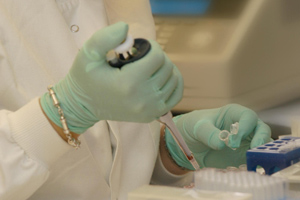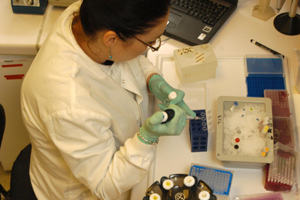Having a family history of melanoma
Our natural risk of illness depends in part on our genes – the instructions that our bodies use to grow and repair themselves.
To decide the risk of illness such as melanoma, to family members, doctors look for signs of high-risk genes within the family.
Those signs are:
- Several cases of melanoma within a family.
The more cases of melanoma the more likely there will be a high-risk gene in that family. However, more than one case might occur by chance alone or because the family live somewhere with a high environmental risk (somewhere sunny like Australia). Some families may also have family members with cancer of the pancreas. - Three of more melanomas in a single family member.
When a person develops multiple primary melanomas they may have a high-risk gene, but research has shown that in the absence of a family history of melanoma, most such people do not have a high risk gene such as CDKN2A: it is likely that many of these people have several low risk genes eg those associated with skin which tends to burn in the sun, and they have had quite a lot of sun exposure. In such a case, then the affected family members would be less likely to pass on a significant risk of melanoma to their children. - Melanoma occurring earlier than usual.
Most cases of melanoma are in people aged 50 or older. In families with high-risk genes then melanoma occurs a little earlier on average.
Referral to a specialist
What gene mutations can cause melanoma?
We know of several genes where mutations (changes or faults in our genes) can increase the chances of developing a melanoma. GenoMEL, the Melanoma Genetics Consortium, is doing further research in this area and more may be discovered in the future.
The most common gene is CDKN2A; it produces a protein called p16. Families carrying mutations in this gene have been discovered in Europe, the USA and Australia. In most ‘CDKN2A families’ in the UK, carrying the mutant gene appears only to increase the risk of melanoma. In the Netherlands, Sweden and the USA however, there also appears to be an increased risk of pancreatic cancer.
The more cases of melanoma there are in the family, the greater the likelihood that the family carries a high-risk mutation such as CDKN2A. Most of the families that we know possess a CDKN2A mutation have more than two cases of melanoma.
We have put information about genetic counselling in the section for melanoma health care teams on this web site. This is written for medically trained people but some families might find the information helpful.
The second most frequent gene (but still very rare) is a gene called CDK4 and in the UK melanoma families tested for CDKN2A mutations are usually also tested for CDK4 mutations. The GenoMEL consortium has published a paper on families with CDK4 mutations and a plain language summary is found in the plain language section of this website.
Since 2014 new mutations in even rarer genes have been found for the first time, in genes called TERT and POT1. So little is known about these genes as yet in terms of what they mean for families in terms of risk, that gene testing is not widely available as yet.

Gene Testing
What about gene testing?
There is a test for mutations in the CDKN2A gene and GenoMEL uses such a test in its research. This work is vital to understanding melanoma and finding better ways of preventing and treating it.
Testing is also available clinically (as part of individual treatment) in several countries including the USA.
Some feel that routine testing of family members might be premature. Why?
- A negative test result might only mean a family possesses other high-risk genes for melanoma that we have yet to identify.
- With the information we currently have it is difficult to say exactly what the chances of developing a melanoma are with a positive test in different regions of the world.
- A positive test would not really change a person’s treatment or care. Patients should still see their specialist regularly and be advised to practice sun protection.
- A positive test might have an impact on insurance premiums in the future.
Testing may well be helpful for some families and not for others: going to see a Clinical Geneticist is therefore about counselling to enable you to make your own mind up as to whether a test is right for you.


